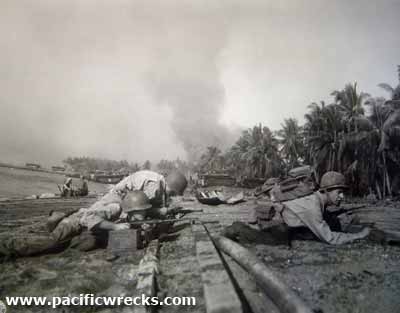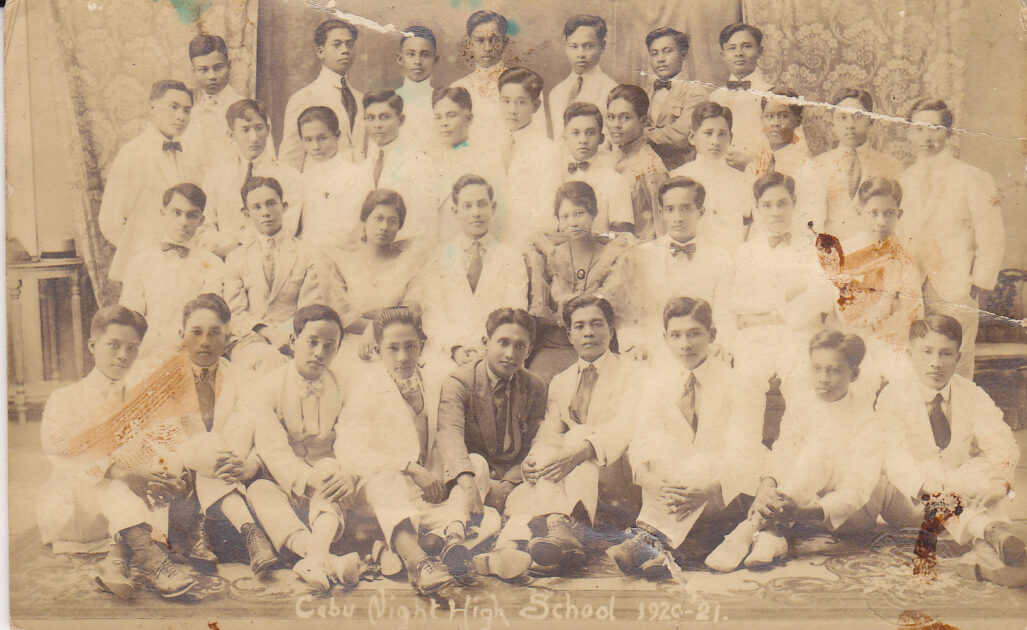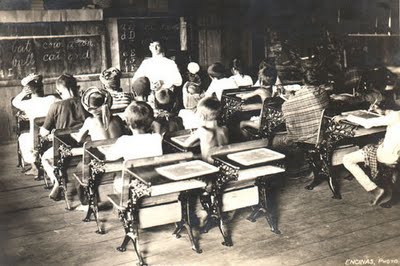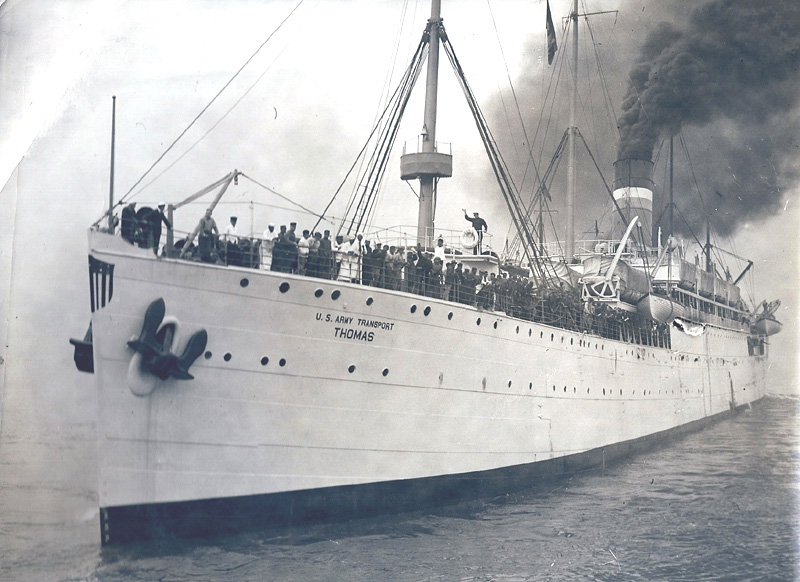This website uses cookies so that we can provide you with the best user experience possible. Cookie information is stored in your browser and performs functions such as recognising you when you return to our website and helping our team to understand which sections of the website you find most interesting and useful.
[et_pb_section bb_built=”1″][et_pb_row _builder_version=”3.0.71″][et_pb_column type=”2_3″][et_pb_accordion _builder_version=”3.0.71″ border_style=”solid”]
[et_pb_accordion_item title=” 1901″]
 The American Soldier – mentors are replaced by the civilian American teachers, who arrive in the Philippines on August 21, 1901, on board the U.S. Army Transport Thomas. The Philippine Normal School is established, together with primary schools throughout the country.
The American Soldier – mentors are replaced by the civilian American teachers, who arrive in the Philippines on August 21, 1901, on board the U.S. Army Transport Thomas. The Philippine Normal School is established, together with primary schools throughout the country.
[/et_pb_accordion_item][et_pb_accordion_item title=”1902″]
Provincial normal schools on the secondary level are established as branches of the Philippine Normal School in accordance with Section A, Act. No. 74 of the Philippine Commission. Among these normal schools are those in Vigan, Ilosoc Sur, Nueva Caceres in Bicol, Iloilo, Cebu and Cagayan de Misamis in Mindanao. The first Cebu Normal School is at the rented building on Colon St., for which the Cebu provincial government pays the amount of ₱200 monthly. This building is the old Colegio Logarta, Later known as the Hijos del Pueblo, which stood on the site of the present Gaisano Main Department Store.
[/et_pb_accordion_item][et_pb_accordion_item title=”1904″]
The first batch of graduates of mixed ages is turned out by CNS.
[/et_pb_accordion_item][et_pb_accordion_item title=”1906″]
The Cebu Provincial High School is established. The building is constructed on the site of the present Abellana National School on Jones Avenue (now Osmena Boulevard). The CNS curriculum is lengthened to four years, and CNS transfer to a building on the new site, where it students share teachers with the CPHS students. John Barrows, the Acting Superintendent of Schools for Cebu province, becomes its principal.
[/et_pb_accordion_item][et_pb_accordion_item title=”1910″]
The City Intermediate School (now the City Central School) is constructed beside the CPHS. Grades V – VII of the Cebu Normal School are housed in this new building.
[/et_pb_accordion_item][et_pb_accordion_item title=”1924″]
 The new building intended to house a separate normal school is constructed across the street from CPHS, on the site which used to be known as Plaza Esportiva.
The new building intended to house a separate normal school is constructed across the street from CPHS, on the site which used to be known as Plaza Esportiva.
[/et_pb_accordion_item][et_pb_accordion_item title=”1925″]
 On June 8, 1925, the Cebu Normal School is formally opened. Some classes, however, like two combination classes, Grades I – II and Grades III – IV, continue to be held at the CPHS grounds. This building is known as the CNS Extension School. Class 1926, which includes former Undersecretary of Education Narciso Albarracin, is the first batch to graduate from the new educational institution. The first principal of the new CNS is Miss Inez Crawford, an American, while the first training supervisor is Mr. Lazaro Milaor, a Filipino.
On June 8, 1925, the Cebu Normal School is formally opened. Some classes, however, like two combination classes, Grades I – II and Grades III – IV, continue to be held at the CPHS grounds. This building is known as the CNS Extension School. Class 1926, which includes former Undersecretary of Education Narciso Albarracin, is the first batch to graduate from the new educational institution. The first principal of the new CNS is Miss Inez Crawford, an American, while the first training supervisor is Mr. Lazaro Milaor, a Filipino.
[/et_pb_accordion_item][et_pb_accordion_item title=”1936″]
With the advent of the Philippine Commonwealth, Filipino administrators also take over. Mr. Miguel Gaffud is the first Filipino principal of the CNS. The secondary normal curriculum is replaced with a two – year college curriculum, Junior Normal, which later comes to be known as ETC (Elementary Teachers Certificate)
[/et_pb_accordion_item][et_pb_accordion_item title=”1941″]
World War II breaks out. Cebu is invaded by the Japanese on April 10, 1942. CNS is used as the headquarters of Japanese general Manjome.
[/et_pb_accordion_item][et_pb_accordion_item title=”1944″]
After June 1944, CNS is used as the headquarters of the Japanese Kempeitai or Military Police. Many guerillas, their suspected sympathizers, patriots and freedom – loving Filipinos are imprisoned, tortured and executed by the Japanese, usually by beheading. Among these is the Governor of Cebu, Gov. Hilario Abellana.
[/et_pb_accordion_item][et_pb_accordion_item title=”March 26, 1945″]
 The Allied forces land on Cansojong Beach in Talisay and the liberation og Cebu begins. The Americans make CNS their Base S.
The Allied forces land on Cansojong Beach in Talisay and the liberation og Cebu begins. The Americans make CNS their Base S.
[/et_pb_accordion_item][et_pb_accordion_item title=”1946″]
classes resume at CNS. The school adopts the two – year general curriculum.
[/et_pb_accordion_item][et_pb_accordion_item title=”1952″]
The two – year general curriculum is changed to the four – year Elementary Education Curriculum, which is later changed to Bachelor of Science in Education (BSE – Elementary Education) in 1954.
[/et_pb_accordion_item][et_pb_accordion_item title=”1954″]
With this, the school becomes a tertiary institution under the leadership of its first dean, Mr. Ramon Melgar.
[/et_pb_accordion_item][et_pb_accordion_item title=”1956″]
The CNS Parent – Teachers Association organizes the kindergarten with an alumna, Miss Lourdes Suico, as the teacher. The kindergarten becomes a regular component of the school the following year.
[/et_pb_accordion_item][et_pb_accordion_item title=”1959″]
BSE (Elementary Education) is changed to Bachelor of Science in Elementary education.
[/et_pb_accordion_item][et_pb_accordion_item title=”1960″]
 The Graduate School is opened with Dr. Tecla P. Revilla, another alumna, as its first dean. It produces its first M.A. graduate in 1966 – Rosemary P. Gellor.
The Graduate School is opened with Dr. Tecla P. Revilla, another alumna, as its first dean. It produces its first M.A. graduate in 1966 – Rosemary P. Gellor.
[/et_pb_accordion_item][et_pb_accordion_item title=”1965″]
CNS is chosen as the venue for the historical – cultural exhibit of the National Museum to commemorate the quadricentennial of the Christianization of the Philippines.
[/et_pb_accordion_item][et_pb_accordion_item title=”1966″]
The Graduate School is opened with Dr. Tecla P. Revilla, another alumna, as its first dean. It produces its first M.A. graduate in 1966 – Rosemary P. Gellor.
[/et_pb_accordion_item][et_pb_accordion_item title=”1970″]
CNS is rocked by demonstrations against Superintendent Heriberta Caguioa. These lead to a rapid decline in enrolment.
[/et_pb_accordion_item][et_pb_accordion_item title=”1974″]
CNS opens its high school training department. Dr. Victoria Cervantes, a Siliman University graduate, is appointed as its first principal in 1978.
[/et_pb_accordion_item][et_pb_accordion_item title=”1976″]
- Through the efforts of Dr. Tecla P. Revilla, CNS is converted into a chartered state college and renamed Cebu State College in accordance with PD 944. Dr. Camilo Alino is its first president.
- CSC starts the two – year Certificate in Tourism program.
[/et_pb_accordion_item][et_pb_accordion_item title=”1977″]
- The Liberal Arts Department was established.
- having received the authority to offer other degree courses, CSC starts programs such as Bachelor of Arts (1977), bachelor of Science in Agricultural Education in consortium with Sudlon Agricultural College, and Bachelor of Science in Nursing, via consortia with the Southern Islands Hospital School of Nursing, the Cebu City Medical Center School of Nursing, and the Bohol Provincial Hospital School of Nursing, all in 1978. It also extends its services to a high school in Tapud, Dumanjug. In the same year, the two – year Certificate in Tourism program is changed to the four – year Bachelor of Science in Tourism. CSC also starts the Integrated Teacher Education Program (ITEP), whose graduates are qualified to teach both the elementary and secondary levels.
[/et_pb_accordion_item][et_pb_accordion_item title=”1982″]
With the closing of the SIH School of Nursing, the students transfer to the newly – created CSC department of Nursing. Class 986 is the first batch to graduate from the department.
[/et_pb_accordion_item][et_pb_accordion_item title=”1985″]
President Tecla P. Tevilla creates three new colleges: the College of Arts and Sciences which offers Bachelor of Arts and Bachelor of Science courses; the College of Nursing; and the Teacher Education College, with its Bachelor of Elementary Education (BEEd) and Bachelor of Secondary Education (BSEd) programs.
[/et_pb_accordion_item][et_pb_accordion_item title=”1987″]
President Jaime Gellor tries to bring order to CSC. But in doing so, he abolishes the three colleges and reverts the structure to its old status, and the three colleges become mere departments. The BST and BS Ag Ed programs are phased out.
[/et_pb_accordion_item][et_pb_accordion_item title=”1993″]
The consortium with CCMS is ended
[/et_pb_accordion_item][et_pb_accordion_item title=”1995″]
President Heidi Limosnero restores the three colleges.
[/et_pb_accordion_item][et_pb_accordion_item title=”1996″ /][et_pb_accordion_item title=”1998″]
Cebu State College becomes Cebu Normal University through the efforts of Congressman Eduardo Gullas and Raul del Mar in the Lover House, and Senator Marcelo Fernan, a CNS alumnus, the Senate. Dr. Heidi B. Limosnero is the first CNU President. The enabling law, Republic Act No. 8688, is signed by Pres. Fidel V. Ramos on June 27, 1998.
[/et_pb_accordion_item][et_pb_accordion_item title=”2000″]
Dr. Ester B. Velasquez becomes the second university president. The College of Arts and Sciences is restricted. It is now made up of the School of the Arts and the School of the Sciences.
[/et_pb_accordion_item][et_pb_accordion_item title=”2004″]
CNU embarks on a teacher 0 sharing arrangement with the Talisay City College.
[/et_pb_accordion_item][et_pb_accordion_item title=”2005″]
CNU in Balamban , an extension school, is established in the barangay of Lamesa with Dr. Racquel Georsua as administrator.
[/et_pb_accordion_item][et_pb_accordion_item title=”2008″]
- The Garbo sa CNU Awards, as conceptualized by Dr. Marcelo Lopez, Chairman of the Museum Council, are given to 106 outstanding graduates to celebrate the 106th anniversary of the establishment of the school. The occasion also marks the launching of Tulay, the Alumni newsletter. Both have become highlights of the yearly alumni homecoming.
- CNU in Medellin, another extension campus, is started. The Administrator is Dr. Isabelo Genegaboas. Also in the same year, Dr. Velasquez retires and Dr. Marcelo T. Lopez is inaugurated as the third CNU president.
[/et_pb_accordion_item][et_pb_accordion_item title=”2009″]
The CNU College of Nursing is recognized by CHED as a Center of Excellence , while the College of Teacher Education is declared as a Center of Development.
[/et_pb_accordion_item][et_pb_accordion_item title=”2011″]
- The school celebrates its long – delayed centenary (delayed by nine years)
- Both the College of Teacher Education and the College of Nursing have their programs accredited by the AACCUP (Accrediting Agency of Chartered Colleges and Universities of the Philippines). Both of these CNU colleges pass level IV accreditation, the first among the AACCUP members to do so.
[/et_pb_accordion_item]
[/et_pb_accordion][/et_pb_column][et_pb_column type=”1_3″][et_pb_sidebar _builder_version=”3.0.71″ area=”sidebar-1″ orientation=”right” background_layout=”light” /][/et_pb_column][/et_pb_row][/et_pb_section]

